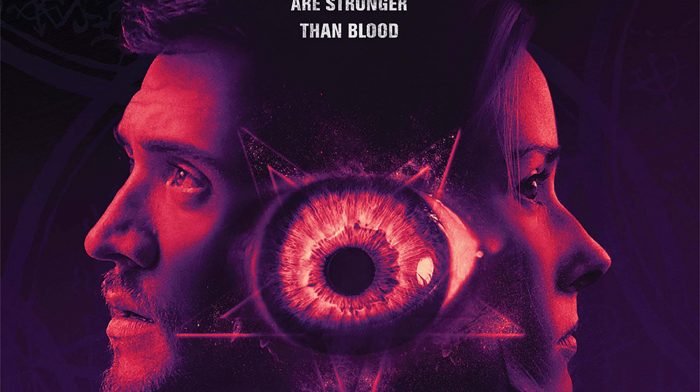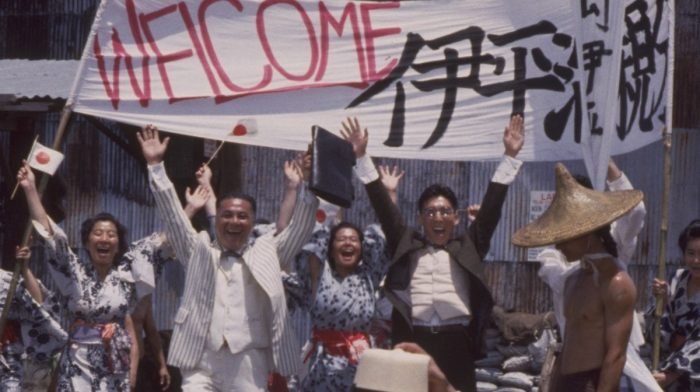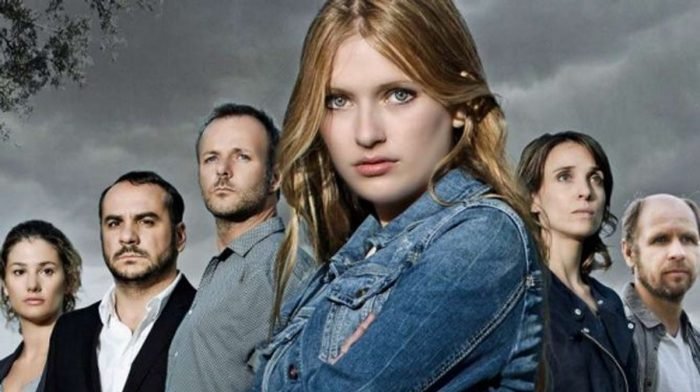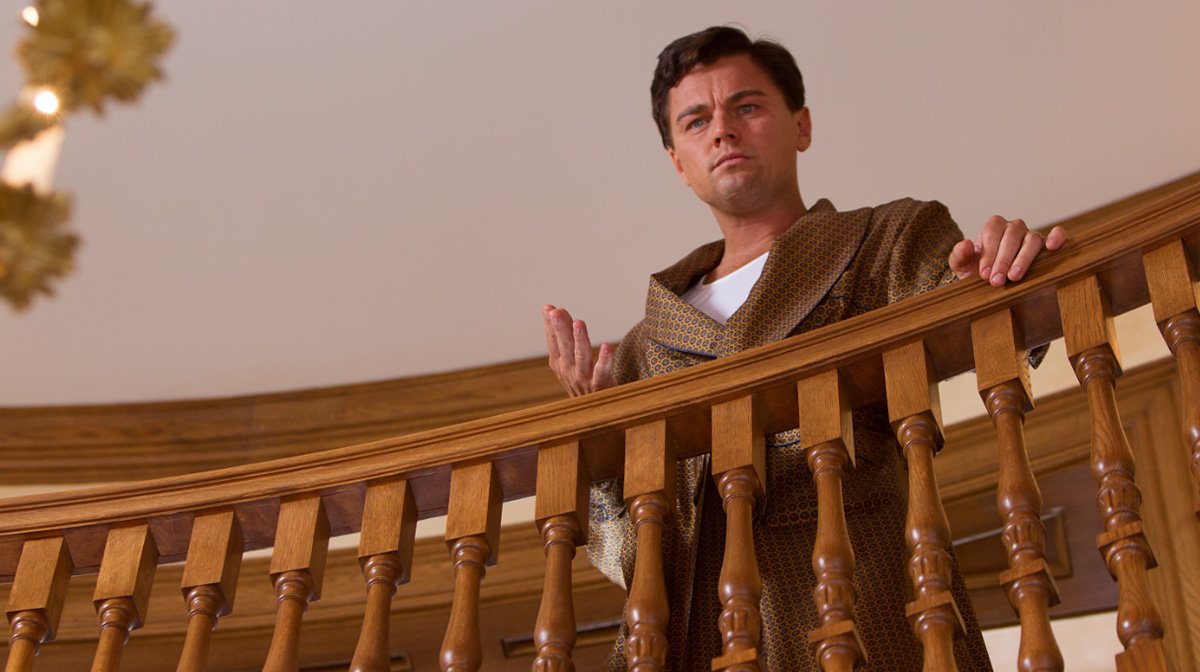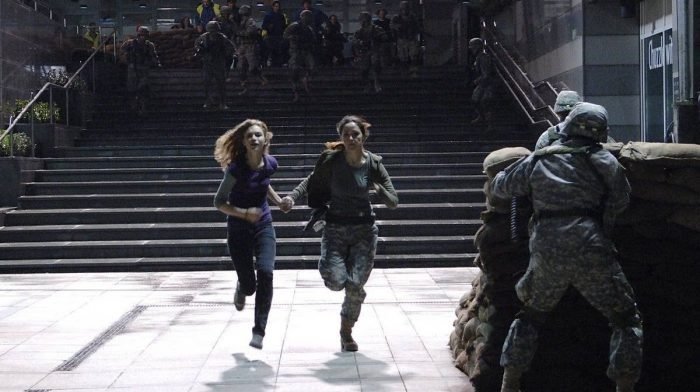A new documentary on director Jean Rollin is released on ARROW today, Orchestrator of Storms: The Fantastique World of Jean Rollin, which examines Rollin’s life in fascinating detail and argues why this film-maker renowned for his films often filled with erotic, vampiric and poetic imagery remains criminally underrated. We caught up with Dima Ballin and Kat Ellinger, the makers of the documentary to find out more about the making of their film and why Rollin’s work is worthy of greater appreciation. For both die-hard Rollin aficionados and newcomers to the man’s work, their documentary offers an enlightening perspective on an often misunderstood filmmaker.
How would you describe the films of Jean Rollin to a person unfamiliar with his work?
Dima: It depends on the film. The Iron Rose I would describe as a meditation on death, and mental and physical decay. It’s probably the ultimate “Goth” film, but not in a cheesy, pretentious way, because it has a texture of realism. The cemetery where it was shot feels like a desolate, decaying city. It really takes you to another world, if you are sensitive and patient enough to experience it. On rare nights, I dream of strange, desolate cities, and The Iron Rose is one of only two films that comes close to invoking that same feeling in me. The only other film that does that is Orson Welles’ The Trial. My other favorite Rollin film is Fascination. That one has more of a comic book feel, but is still very Gothic, with two mysterious women alone in a Chateau, held at gunpoint by a criminal on the run. A very beautiful and mysterious film, with very beautiful women.
Kat: Rollin occupies his very own singular space that’s very hard to describe unless you’ve spent time in it. This isn’t traditional gothic at all, in fact he constantly subverted themes found in the gothic — especially those around vampire lore — shifting them to fit his own obsessions, which were much more informed by French symbolism, a literary and art movement that was parallel to the gothic in the 1800s, and even inspired by it, but I would call it gothic’s darker, more surreal and perverse twin. So my only advice would be, pick one of his more accessible films like Fascination or The Living Dead Girl, forget everything you know about gothic and just spend time in his world. You will know very quickly whether it’s for you. It does require a very open mind though.
What made you decide Rollin would be a good subject to analyse further in a documentary?
Dima: The documentary came about by accident. The original idea was to make a small featurette, but Kat and I knew that this could and should be something much bigger. Rollin hasn’t really made it into the horror mainstream, even at this point, and he needs to be much better appreciated then he is. His films are unlike anyone else’s.
Kat: For me, Rollin has been a director I have championed and been fixated on for most of my career as a writer on film, so it seemed natural to want to expand that into a film. Until very recently, and as our film hopefully shows, he’s been really misunderstood also, so there was a case of wanting to add to the voices who have worked hard to change those preconceived notions about him too. I’ve done a lot of that as a writer, but film is perfect to take that further, and show-not-tell. A lot of his images speak for themselves and that’s very hard to capture just in text.
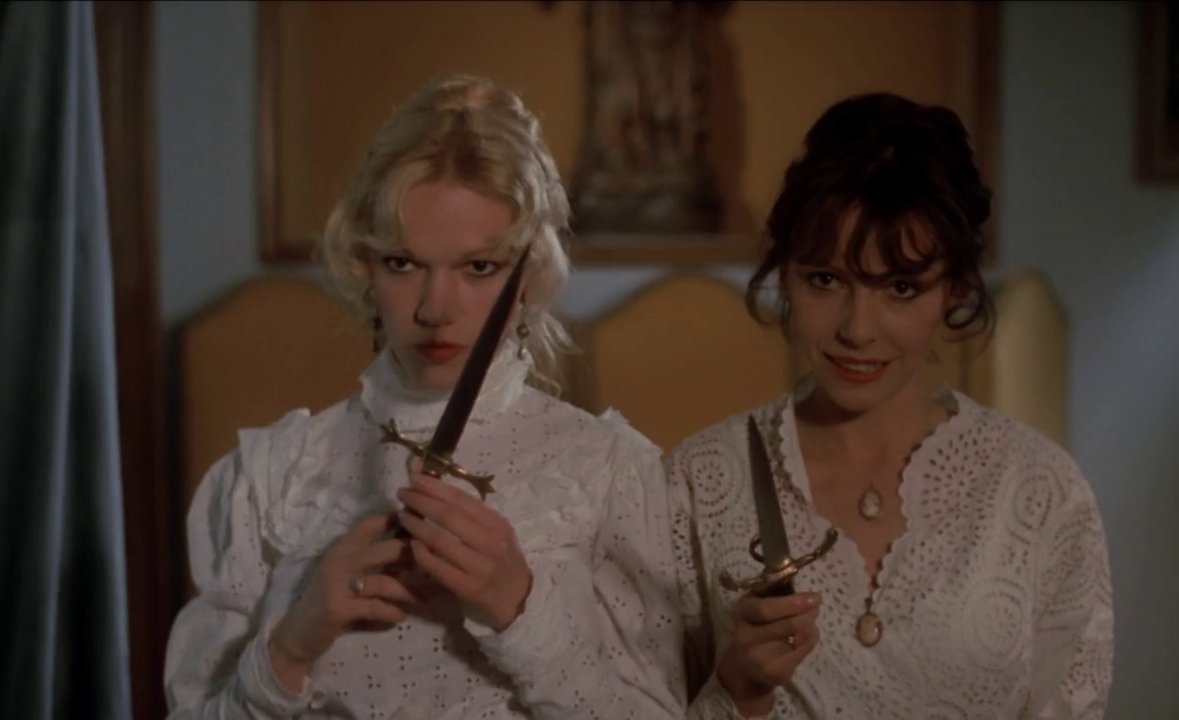
Eva (frequent Rollin collaborator Brigitte Lahaie) and Elisabeth (Franca Maï) in Fascination (1979)
Some of your contributors suggest his films transcend genres – his films existing in a category of their own. What do you think makes Rollin a unique voice in cinema?
Dima: Rollin’s particular uniqueness stems from the fact that he was not a “genre” filmmaker, in the same way we think of genre directors. He was not a “fanboy” like Paul Naschy, for example. His background was in high culture, thanks to his parents. So he brings that to his filmmaking, along with pop art.
Kat: He was informed by traditions not seen much in film. As mentioned French symbolism and Decadence, their accompanying art traditions, literature, poetry, surrealism, literary erotica, transgressive philosophy, as well as the avant-garde and sixties counterculture. As a result, his films come with these amazing rich conventions that are hardly seen in cinema. I consider him a gateway for that alone, a gateway to finding those other esoteric paths, all of which are very rewarding in their own way.
Which of his films do you think best encapsulate the themes Rollin likes to explore?
Dima: All his personal films encapsulate his core obsessions. By “personal” I mean films he didn’t do strictly for money, such as his porn, or films like Zombie Lake, which he was asked to do after Jess Franco pulled out of the project.
Kat: In any of his vampire films you see his obsession with pairings of twin girls, his love of gothic ruin, his fixation on sex and death as artistic statement, which is stubbornly anti-commercial and deliberately surreal. A good starting place would be either Fascination, The Living Dead Girl, or The Nude Vampire as his least surreal and esoteric though. He was that singular though that these themes even occur in some of his pornos! It was like it was all him, all the time.
Which part of the documentary is the most satisfying for you? For example was there a particular theory or comment that you responded to the most?
Dima: I love Cocteau’s comment: “What the public criticizes in you, cultivate. That’s you.” Apart from that, my favourite part of the doc is the end, which Veronique Trevers makes so poignant. She is such a great, expressive storyteller.
Kat: For me it was just getting to work with some amazing incredible scholars, people who absolutely loved Rollin, who knew him, worked with him, loved him as a filmmaker and a person. I also loved being able to explore subjects like his relationship with Georges Bataille and literary erotica and pornography because those are subjects I write about a lot in general.
As a lifelong outsider artist, how do you think Rollin’s career would have changed if he had received the approval and support of his contemporaries or regular financial backing that he sought?
Dima: Impossible to say. Cocteau also said: “when all the means are placed before you, your senses become lethargic.” So it’s possible that Rollin’s films would have simply looked more slick and more expensive, with regular financial backing, but would have lost their inner life. Or, they could have been simply better than they are. I don’t know.
Kat: That’s a difficult question. There was so much he never got to make, which makes me weep. If anyone could have translated Bataille’s Story of the Eye for example it would have been him. The fact he never got to make a Bathory film, just heart-breaking. So obviously money would have improved this and we would have gotten more. As for getting approval though, as much as he needed it and wanted it, I don’t know, the subjects he chose were outsider for a reason and all the more powerful for them.
Rollin has a reputation of being a “controversial” film-maker but your documentary suggests he never willingly invited this and it was more a by-product of his artistic vision. Do you think this controversial label has helped or hindered his reputation?
Dima: Controversy, such as it is, is usually created by the media to sell more copies, (or get more clicks, in today’s terms). I don’t see him as terribly controversial. I think he was misunderstood, both by audiences and critics, because he didn’t neatly fit into any category. He wasn’t strictly a horror filmmaker, or strictly an exploitation filmmaker, or strictly a surrealist, or even strictly a pornographer. People just didn’t know what to do with him, and that’s still true, I think.
Kat: I wouldn’t say he was necessarily controversial, although some might see him that way, it’s just that he was outright ignored or talked down to by critics, treated very poorly because of a kind of snobbery around genre cinema in France at the time. While that label has no doubt helped some films and some filmmakers, it did nothing to serve Rollin because even now he’s still way more obscure than he should be and his films are still widely misunderstood.
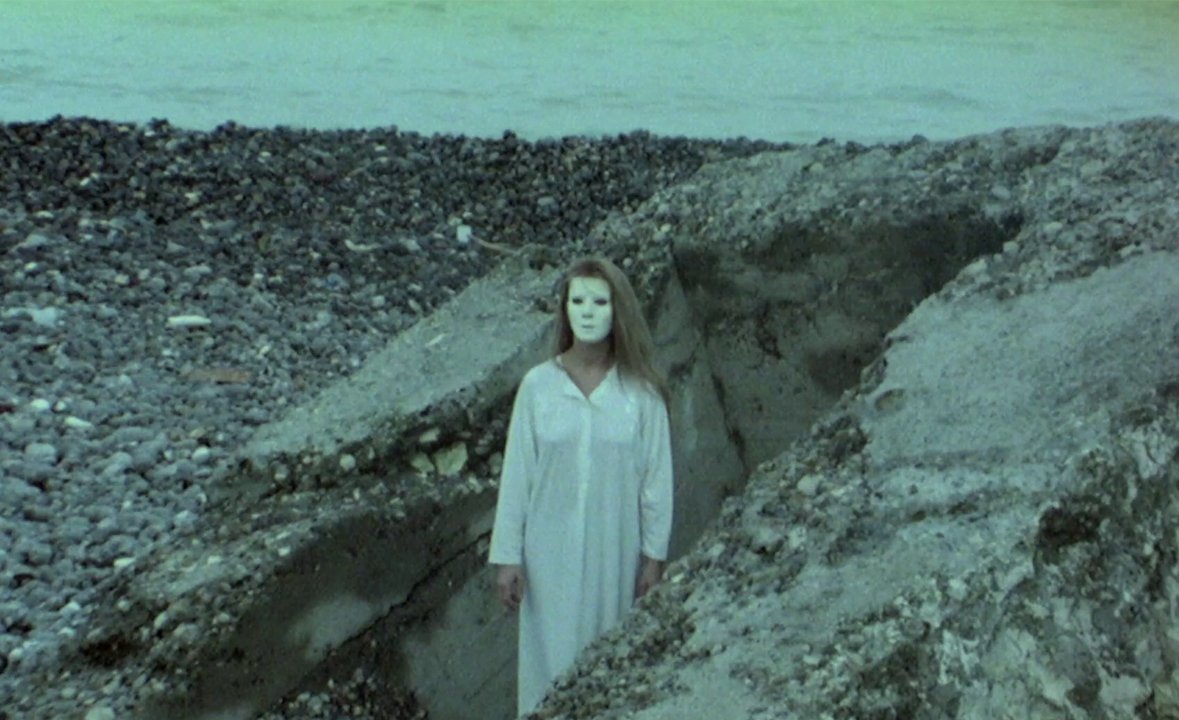
Rollin’s interest in dream-like imagery continued into the latter stages of his career in Lost in New York (1989)
Was there anything you learnt or discovered about Rollin in the making of this documentary that surprised you or that you think might surprise viewers?
Dima: Just all the hardships he went through to get his films made and screened. I never knew he was such a maverick. That surprised me. I would place him alongside other maverick indie filmmakers, such as Orson Welles and John Cassavetes, though Rollin’s vision was obviously very different from theirs.
Kat: I knew his health was bad at the end of his career, it wasn’t a secret. But I didn’t know how bad. The fact he kept going through all of that hardship was incredible and it made me admire me even more for his tenacity and spirit.
What comes across in the documentary is Rollin’s modesty and his thrill to find out people are interested in discovering his films years later. Why do you think his films have endured?
Dima: Rollin was an auteur. His films are uniquely his. People either respond to them or not. I think his films endured because enough people continue to respond to them.
Kat: Because they are so unique and remain unique. That’s testament to his originality, his gift to cinema. Audiences tend to be quite cynical these days, especially in genre, where people think they’ve seen everything, yet, he still has the capacity to surprise people all these years later, and draw them in because of that.
How do you think Rollin’s influence is most felt today?
Dima: I agree with Kat. Rollin’s films are still waiting for a true renaissance. His films are not always easy to watch, or understand, as they were not for me at first, but if one puts in the effort, the rewards can be great.
Kat: Sadly I don’t think it is! Here and there, I guess. But it’s not like someone like Dario Argento whose films inspired an entire generation of neo-giallo filmmakers. I still live for that day though. Hopefully it’s coming soon because the world would benefit from much more surrealism, vampires, and French symbolism in cinema.
Orchestrator of Storms: The Fantastique World of Jean Rollin is available to watch on ARROW.

